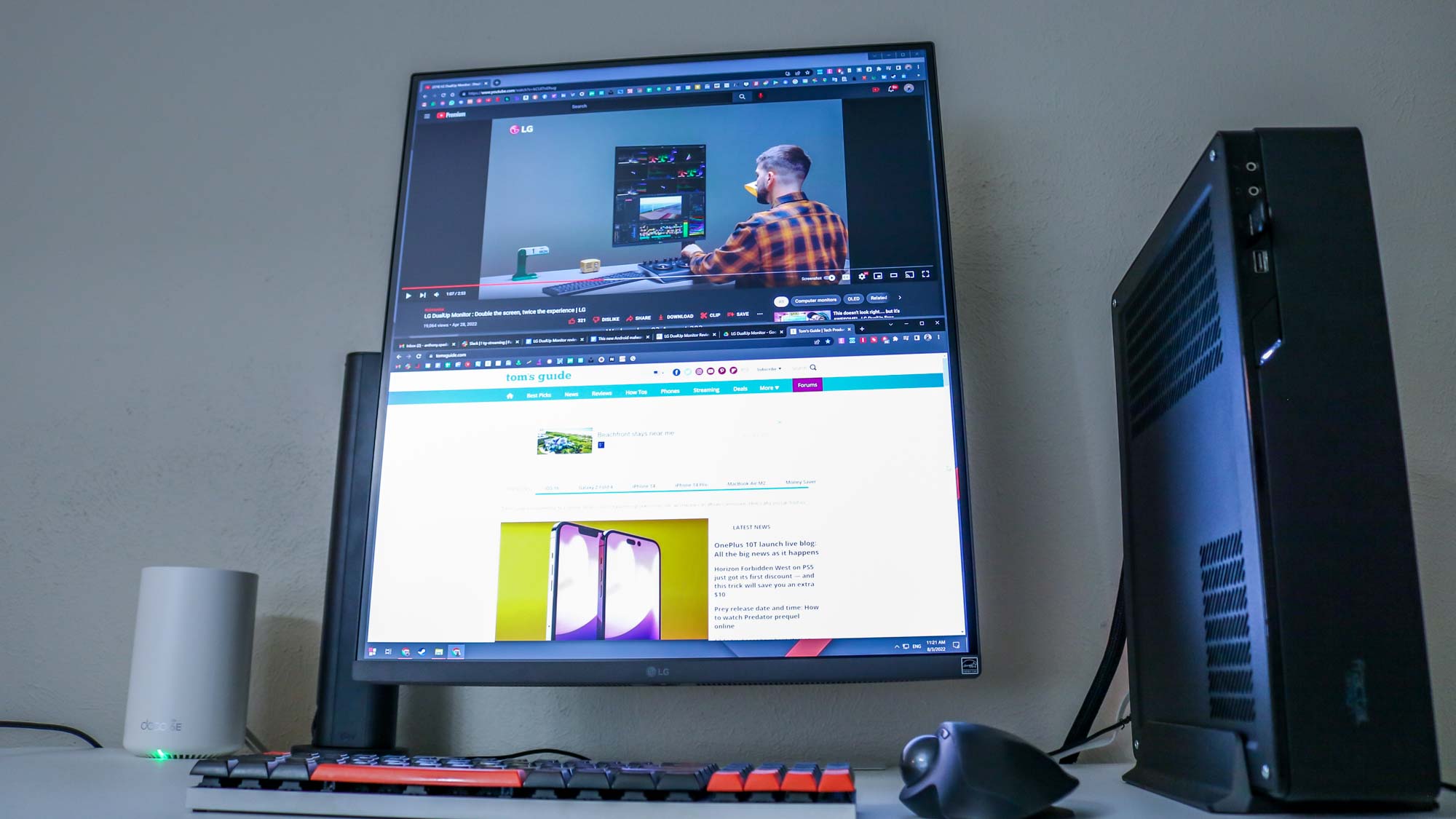The LG DualUp is the perfect vertical monitor — here’s why
This display's tall enough for a full page of text but wide enough for landscape content

After spending the last two months using the most unique monitor LG has made to date, I wholeheartedly believe that the LG DualUp is the perfect vertical monitor for those whose work just can’t be done in landscape mode.
If you haven’t had a chance to check it out yet, the LG DualUp is certainly one of the best monitors as well as the first to feature a 16:18 aspect ratio with a 2,560 x 2,880 resolution. Instead of being used in landscape orientation, this monitor is designed to be used in portrait mode.
LG designed the DualUp in such a way that it can replace vertically stacked dual monitor setups by offering the same screen space with a single display. In fact, the DualUp offers the same screen real estate as two 21.5-inch monitors without bezels getting in the way.
While LG advertises the DualUp as a “multitasking powerhouse” for content creation and coding, I actually found myself using it as a vertical monitor more often than not. Sure, the Korean hardware maker’s OnScreen Control software makes it easy to use multiple windows at the same time on the monitor, but for me, I really liked being able to see a full page of text without having to scroll.
Below, I’ll go into why you might want to use a vertical monitor and explain how the LG DualUp solves one of the biggest problems you may encounter when making the switch from landscape to portrait mode.
Why use a vertical monitor in the first place?

If you frequently read, write or code and haven’t tried using your monitor in portrait mode yet, you should give it a shot as you’ll likely be quite surprised.
While using a monitor (or even an ultrawide monitor) in landscape mode is perfect for watching videos and gaming, portrait mode allows you to see even more information without having to scroll. This is great for editing documents, writing code or reading text and makes the work of authors, editors and even lawyers that much easier.
Get instant access to breaking news, the hottest reviews, great deals and helpful tips.
Using a vertical monitor as your main display has its downsides though, which is why many people prefer dual monitor setups. This way you can watch videos and play games on one monitor in landscape mode while looking at messages or reading text on another screen in portrait mode. However, if most of your work involves reading, writing or editing, you’ll likely benefit from having even just a single monitor in portrait mode.
It doesn’t matter whether you use Windows, macOS, ChromeOS or even Linux, you’ll be able to quickly and easily change the orientation of your display in the settings menu. For instance, I did this on one of the best mini PCs running Windows when I set up the digital dashboard in my office last month.
The downside of vertical monitors
Using a monitor in portrait mode is great for some things and downright terrible for others.
For instance, if you’re a photographer or a graphic designer, you’ll likely want to stick with using your monitor in landscape mode so you don’t have to scroll horizontally while editing photos. The same goes for those using a monitor instead of one of the best TVs for streaming content online and gaming on a vertical monitor is a no-go unless you’re playing Ikaruga, Downwell or Pinball FX3.

My main complaint when using a vertical monitor though is in regard to multitasking. Sure, you can have one window at the top and one at the bottom but as most programs and websites weren’t designed to be used this way, you’ll run into problems. Besides having to scroll vertically, you may also have to scroll horizontally to see every part of a website or a program’s entire user interface. Fortunately, LG took this into account when designing the DualUp.
LG DualUp: The best of both worlds

Unlike a traditional monitor used in portrait mode, the LG DualUp is actually a bit wider to accommodate multitasking. This gives the monitor its unique look but also serves another purpose, you can use two full size 16:9 windows at the same time.
What I really liked about this is that I could use the LG DualUp as a vertical monitor when writing or editing but then when I wanted to look at content in landscape mode, I could fire up LG’s OnScreen Control software and have two full-sized windows stacked on top of each other.
While you can’t comfortably do this with a regular monitor in portrait mode, you can physically rotate it back to landscape mode if your monitor stand or arm allows it. However, this takes time, can get annoying fast and depending on your setup, you may not have enough room on your desk to do so.
This is why for me, the LG DualUp is the perfect vertical monitor. You can view a whole page of text at once without having to scroll but you also have the room and the flexibility to view landscape content when you need to without having to rotate your monitor.
Next: If you're looking at tidying up and have messy cables lying around — you can check out how I used this simple hack to tame my tangled box of cables.

Anthony Spadafora is the managing editor for security and home office furniture at Tom’s Guide where he covers everything from data breaches to password managers and the best way to cover your whole home or business with Wi-Fi. He also reviews standing desks, office chairs and other home office accessories with a penchant for building desk setups. Before joining the team, Anthony wrote for ITProPortal while living in Korea and later for TechRadar Pro after moving back to the US. Based in Houston, Texas, when he’s not writing Anthony can be found tinkering with PCs and game consoles, managing cables and upgrading his smart home.
